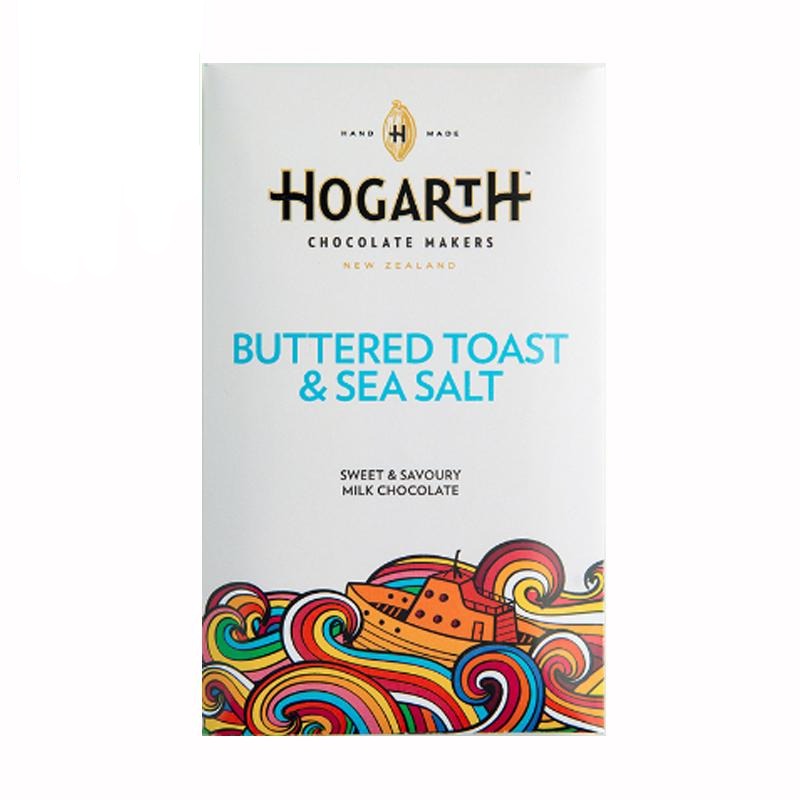For my latest interview I caught up with Alastair (Ali) Gower from Scotland's finest, Chocolate Tree. Ali and his wife Friederike started Chocolate Tree in 2009, and started making chocolate from the bean in 2012. Their Peru Marañón milk chocolate was one of my first craft chocolate loves, and it's been a pleasure to stock their chocolate since day one of The Chocolate Bar.
Recently Ali has been on a sourcing trip to Central and South America, so this seemed like a great time to catch up with him and find out what's been happening...

You’re currently visiting cacao plantations in Central and South America. Where exactly have you been and who have you met?
That’s right! I have just returned from one of our longest sourcing trips (5 weeks), where I visited some really incredible places and met some very interesting people. Not plantations though: smallholdings. There is a big difference. A plantation is usually large and employs its workers, a smallholding is a small family-run farm. I started by taking our core production team at Chocolate Tree out to Piura in Northern Peru, where we met up with Luis Mancini of CacaoTales. Luis has been helping farmers in the Piura region to export their cacao to a premium market. The specific community we work with in Piura is called Chililique, the smallholders there have an unusual and incredibly fruity flavoured cacao, which we make into a great dark chocolate bar. It was fantastic for my team to see cacao at origin for the first time, and we had a great time catching up with Don Angel and the Chililique community. They have just built a new post-harvest facility so it was great to see it all in action.

Then I travelled up to Southern Mexico, landing in Tabasco to meet with Anders Prien of Original Beans and Hugo Chavez of Agrofloresta. Hugo is working with the Mayan Zoque communities in the region to grow and post-harvest their cacao to a high standard so it can be sold to the premium market. The cacao and the people here were wonderful. We had a really good time in Mexico, and look forward to launching a bar or two from this origin in August this year.
After Mexico I travelled East to Belize, to visit Emily Stone of Uncommon Cacao. Emily has pioneered a premium cacao program in Belize called Maya Mountain Cacao; it was really interesting to spend time with her and see all the hard work she has put in to making a difference in Belize. It’s a small country with a very diverse ethnicity, which can make bringing people together there a big challenge sometimes. I really admire the work of Emily and her fantastic team in Belize. After Belize we did another trip over the water to Guatemala to visit her new origins there. We’ll be launching a Belize bar in August.

Lastly, I visited my friend Steve Bergin of Conservation Cacao. Steve travels Latin America full time helping farmers to improve their post-harvest process and enabling them to get their cacao into a premium market. He was working from Puerto Maldonado at the time, in the very South of Peru, right next to the Amazon rainforest. And so that is where I visited him and spent a week purely learning about his work and exploring this really interesting part of Peru. It was as deep into the virgin rainforest as I have ever explored and it profoundly affected me to see large deforestation in the area. Agroforestry with cacao is one way of helping to counteract the devastating impact of deforestation.
Why do you think it’s important to visit the people you source cacao from?
The main reason is so I can be much better informed about where our most important ingredient is coming from, and who is behind bringing it to the market. So learning about the environmental and social impact of cacao are the main drivers behind these trips to origin. Firstly, it’s important to me to see that a system of agroforestry is being used, which means that the cacao is a benefit to the natural environment. Secondly, I need to know that the right price is being paid (at the farm gate), and that cacao is bringing in a positive social change or stability to the farmers.

How do you decide who to work with and where to source beans from?
Largely it’s based on the quality of the cacao of course, and we receive several samples and do several trials before moving forward with any new supplier. I choose origins that I think are interesting, and complement or innovate our range. However, the most important thing for me is having trust with the people involved. I need to know what the motivations are for the people I work with. I am looking for people who genuinely care about the environment and the farmers, they need to show me what they are doing to make a positive difference.
You’ve been making chocolate from the bean for six years now. How has your relationship with chocolate developed over that time?
Cacao and chocolate are a large part of my life. Over the course of these years, I have been in wonderment at times and agony at others but for the most part it is a very robust relationship. I get a lot - personally - out of doing what we do because it enables me to do something good with my life. My knowledge of cacao and chocolate has of course expanded significantly since we began, and I can be very critical now of chocolate which sometimes gets in the way of just enjoying it.

In terms of being a craft chocolate maker, what are some of the biggest challenges you face?
The biggest challenge is not making chocolate, it’s running a business. A successful business doesn’t come along easily, you have to be completely devoted to it for a long time. This means working late nights and long weekends, and going the extra mile all the time. Doing this whilst also raising a family can bring it’s challenges, but we have proven that we can do it now. Our kids are nearly old enough to start helping out at the factory!
Does being based in Scotland have an influence on the chocolate you make? If so, how?
Sure it does. Our factory is on a farm set in the lovely Scottish countryside, working here has a positive effect on us, which I like to think you can taste in the chocolate. For a long time we were asked to create a single malt whisky chocolate bar, which is not a technically easy thing to do, but we came up with a good technique and now it’s our best selling bar.
What have been some of your favourite chocolate bars you’ve tasted recently?
I wasn’t eating very much chocolate when I was travelling, but I did very much enjoy the Cusco bar from Marana, which I bought in Cusco. I’m nibbling on a Bonnat 100% bar in the evenings here which, is great paired with a good red.
What’s your favourite thing about being a chocolate maker?
I love the transformational process from cacao to chocolate. I’m in love with the whole process and the result is something really beautiful. I love knowing that the work we do helps people feel happy, protects biodiversity at origin and strives for a better, more equal world.

Thanks so much to Ali for taking the time for this interview, and for allowing us to use some of his fantastic photos.
If you haven't tried any Chocolate Tree bars before, be sure to check them out!



